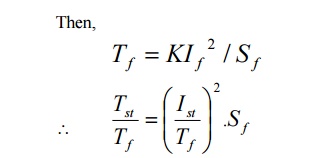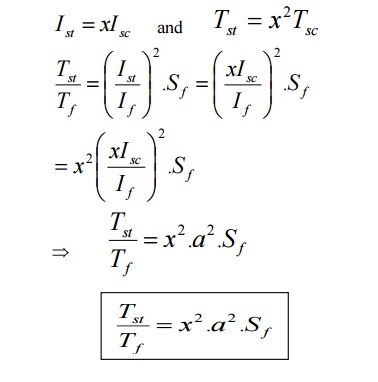Chapter: Electrical Drives & Control : Starting Methods
Stator Resistance (or) Primary Resistance Starter
STATOR RESISTANCE (OR) PRIMARY RESISTANCE STARTER
Reduced
voltage starting:
Their purpose is to drop some voltage and hence reduce the voltage
applied across the motor terminals.
In this way, the initial current drawn by the motor is reduced.
However, it should be noted that whereas current varies directly as
the voltage, the torque varies as square of applied voltage.
[Note: When applied voltage is reduced, the
rotating flux f is reduced which in turn decreases rotor e.m.f and hence rotor
current I2. Starting torque which depends both on f and I2 suffers on
two counts when impressed voltage is reduced]
For example if voltage applied across motor
terminals is reduced by 50%, starting current is reduced by 50%, but torque is
reduced to 25% of the full-voltage value.

When motor is direct-switched on to normal
voltage, then starting current is the short –circuit current Isc.


Starting torque = 1.96 x Full load torque.
Hence, even if current is greater than full
load current the starting torque is only 1.96 times full-load torque.
If applied voltages/phase can be reduced by
fraction „x‟, then

It is obvious that the ratio of starting torque
of full-load torque is x2 of that obtained with direct switching
(or) across the line starting. This method is useful for the smooth starting of
small machines only.
Related Topics